One of my favorite PC trends has been the explosion of . Even after big names like ASUS and Lenovo entered the market last year with the and , more and more manufacturers continue to join the fray. But with the Claw A1M, MSI is taking the road less traveled by opting for an Intel chip instead of something from AMD. And that has made a world of difference, even if many of these changes are not positive.
Design and display – Simple but effective
While MSI may have screwed up with the Claw’s processor, its design is incredibly familiar. Indeed, in addition to being black instead of white, it almost looks like a carbon copy of the ROG Ally. That said, a few subtle changes have some impact. The Claw’s handles are more pronounced, making it more comfortable to hold, while its rear paddles are smaller and located a little lower, so there’s less chance of you pressing them by accident.
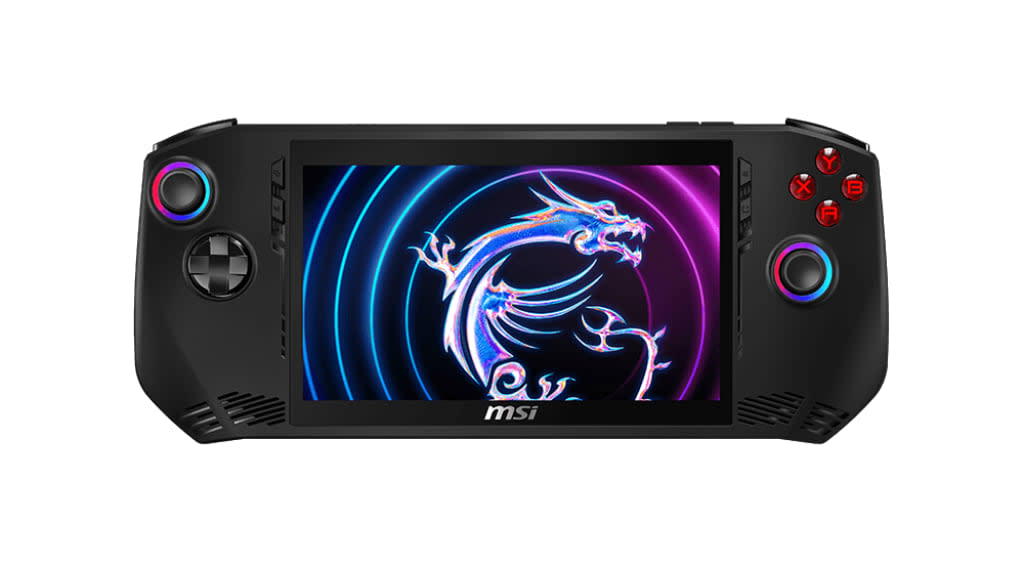

MSI
The decision to go with an Intel chip was a bold move. Unfortunately, the Claw’s performance isn’t good enough to justify its price compared to competitors like the ROG Ally and Legion Go.
- Solid design
- 120Hz screen
- Supports Thunderbolt 4
- Decent battery life
- Single USB-C port
- More expensive than ROG ally
- The MSI Center app is clunky
- Performance could be better
$800 at Best Buy
MSI also went with Hall effect joysticks, so they’re a bit more precise and should wear better over time. However, the springs inside are rather light, so they don’t feel as tight as I usually prefer. Unfortunately, while its triggers are nice, the Claw’s bumpers are a little too squishy.
Meanwhile, almost the entire back panel of the Claw is ventilated to provide ample space for cooling. And at the top, there’s a built-in microSD card reader, a 3.5mm audio jack, a volume rocker, and a single USB-C port that supports Thunderbolt 4. The latter is a very nice inclusion as it’s quite Quick to connect peripherals. as an external GPU dock. I just wish there were two to have a free slot for accessories.
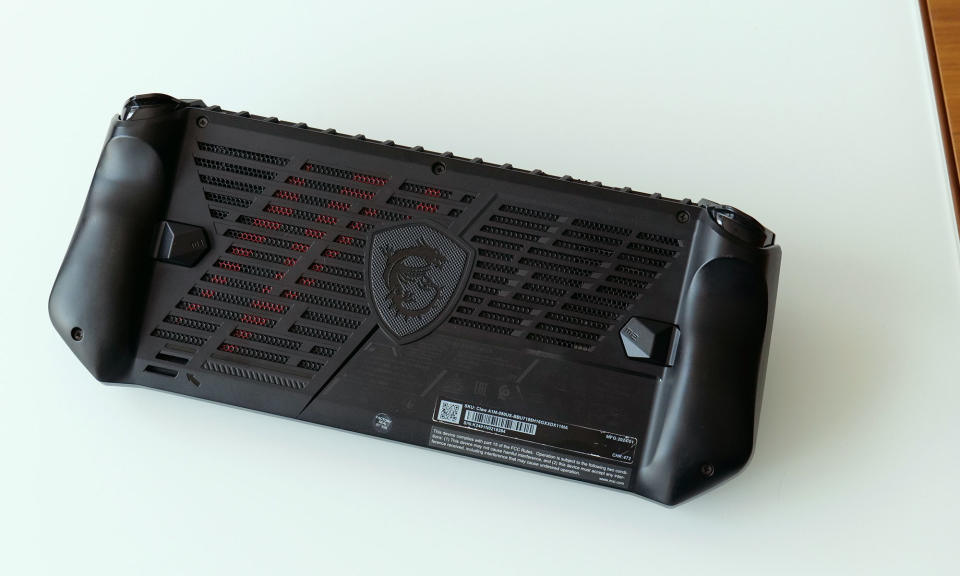

Of course, in the middle is a 7-inch 1080p IPS LCD screen. It’s relatively colorful, and with a tested brightness of around 450 nits, it’s easy to see even in the sunniest rooms (although direct sunlight is still a problem). However, aside from a 120Hz refresh rate, there’s not much else going on. There’s no variable refresh rate to help reduce tearing in more modern games and it can’t match the size or more saturated hues of the Legion Go’s 8.8-inch OLED panel. While this isn’t really a design consideration, with the Claw priced at $750, I wish MSI would ship it with a case included, like Lenovo does with the Legion.
Performance – Up to par, but barely
This is where things get a little complicated, because at least on paper, the Claw is pretty well equipped. Our review unit features an Intel Core Ultra 7 155H processor with Arc graphics, 16GB of RAM, and 1TB of storage. There’s also a cheaper model with an Intel Core Ultra 5 135H chip and a 512GB SSD. Unfortunately, the Claw’s actual performance lags behind MSI’s claims and competing handhelds. At CES 2024, MSI touted that the Claw would be 20-25% faster than AMD-based alternatives. But no matter what I do or how much time I spend tweaking the settings, I just can’t produce such rough numbers.
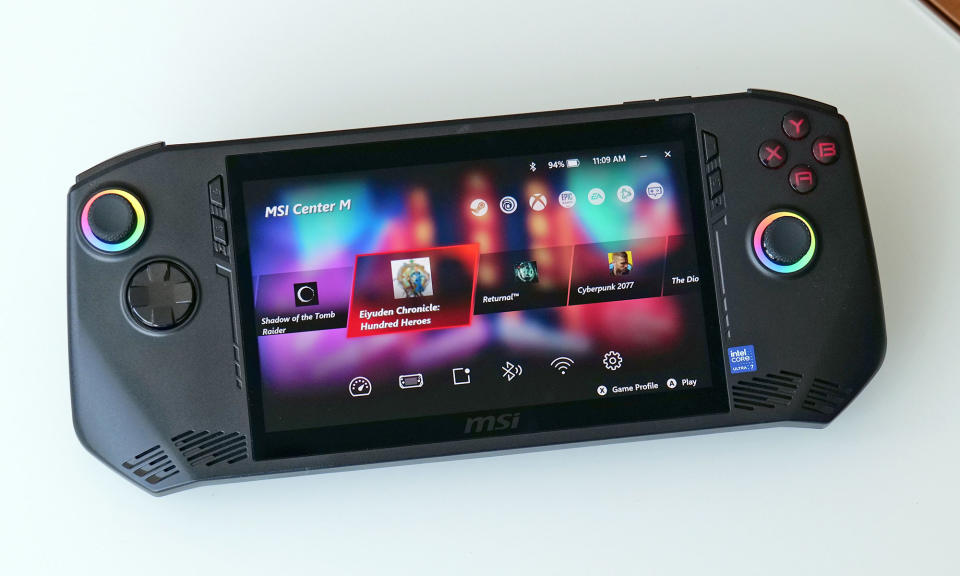

In Shadow of the Tomb Raider at 1280 x 720, with high graphics and in balanced mode (30 watts), the Claw achieved 52 fps, which is slightly below the 54 fps I got from the ROG Ally at just 15 watts. To make matters worse, these numbers didn’t improve much when I switched to the Claw’s 35-watt Extreme Performance setting, which only increased the framerate to 59fps, compared to 60fps for the Ally when It’s set to 25 watts. So, despite a higher TDP (total device power), the Claw barely keeps up.
It’s a similar story in other titles as well. In Cyberpunk 2077 at 720p on average graphics, the Claw hits 50fps in balanced mode, which is the same as the Ally. Finally, in Backl at 720p on support, it was again essentially a tie with the Claw hitting 32fps to the Ally’s 33fps. Overall, the Claw’s performance isn’t bad, but it’s not as prodigious as MSI promised.
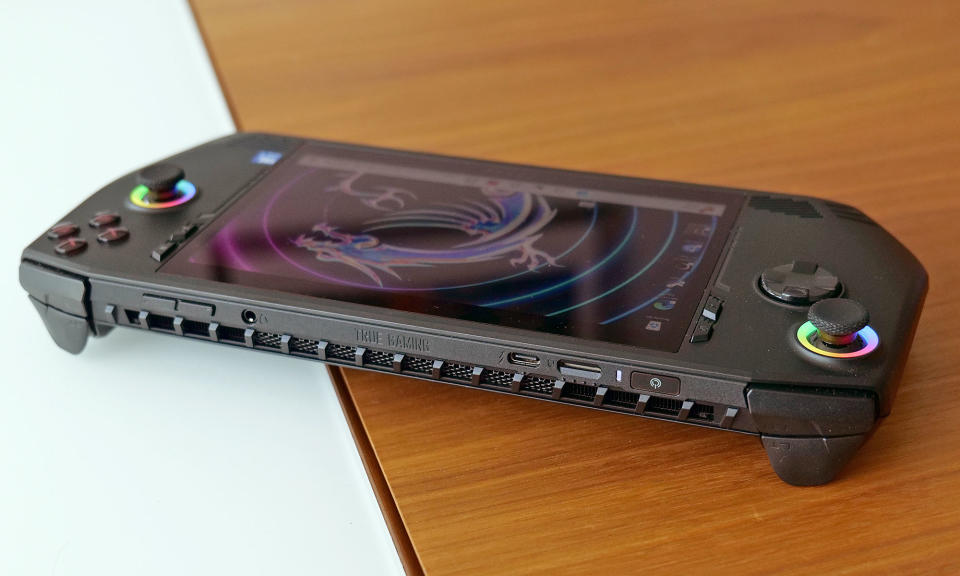

The underlying problem appears to be Claw’s optimization and graphics drivers. I’ve been using the Claw for about a month, and in that time it’s received a ton of updates, including a couple of BIOS flashes and a seemingly endless number of new graphics drivers. There was even a performance improvement of up to 30 percent in some titles. So imagine how difficult performance was during the early spring launch.
In some ways, this level of support is reassuring because it shows Intel’s commitment to improving the graphics of its latest chips. That said, the Claw has been on the market since April according to the market, so it clearly wasn’t ready for launch and its performance continues to be a work in progress.
Battery Life – Nothing special
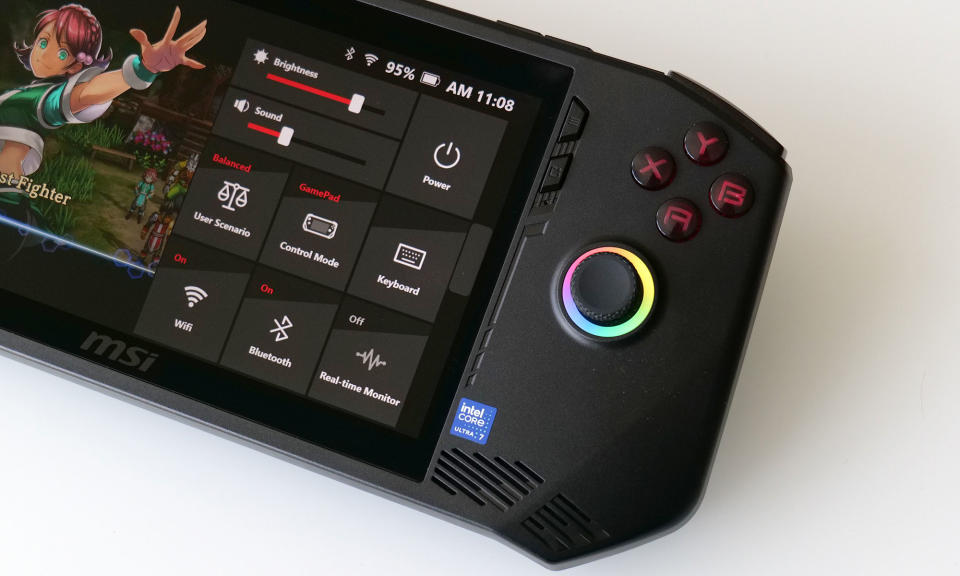

With a 53 Wh cell, it was hoped that the Claw could offer much longer battery life than the Ally and its smaller 40 Wh power pack. But due to the Claw’s higher TDP, the difference in actual longevity isn’t as pronounced. When I played Diablo IV on average graphics, the Claw lasted an hour and 43 minutes, 12 minutes better than the Ally’s time of 1:31, but more than 20 minutes slower than the Steam Deck’s mark of 2:07.
Software – Clumsy at best
One of the biggest problems with Windows-based handhelds is that while they’re great for gaming, doing anything else without an external mouse or keyboard can be a chore. Windows 11 generally works as expected, but the MSI Center app seems much less polished. Similar to ASUS’ Armory Crate, MSI Center is meant to be a one-stop shop for launching games, changing settings, and downloading updates. And while it works, it feels clunky. The app often stutters when you open it, and I’ve encountered several cases where patches get stuck while trying to update the software.
Conclude
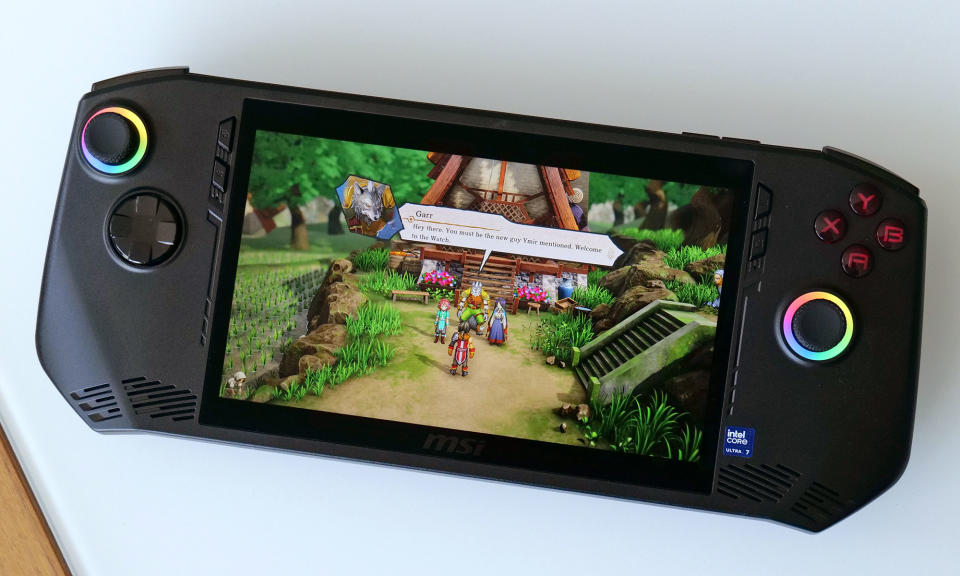

Ultimately, timing might be the Claw’s greatest enemy. Had it been released last year when the ROG Ally and Legion Go hit the market, the Claw might have been a more interesting rival. But ASUS is set to release a successor to the Ally next month with a completely redesigned chassis, 24GB of RAM, and a massive 80Wh battery. This leaves the Claw in a very difficult situation. And our top-end review unit, which is (albeit with half the storage) and has basically the same performance and almost identical design.
Meanwhile, thanks to recent price drops, the Claw is also more expensive than the , but lacks the OLED screen, kickstand, and detachable controllers found in Lenovo’s handheld . This doesn’t even take into account Intel’s drivers, which clearly weren’t ready at launch and even now, after several updates, don’t offer a significant performance advantage. But the Claw’s biggest opponent might be MSI itself, because while we’re still waiting for an official release date, the company has already announced a successor. The Claw isn’t a bad portable gaming PC; it arrived too late and without the adjustments it needed.